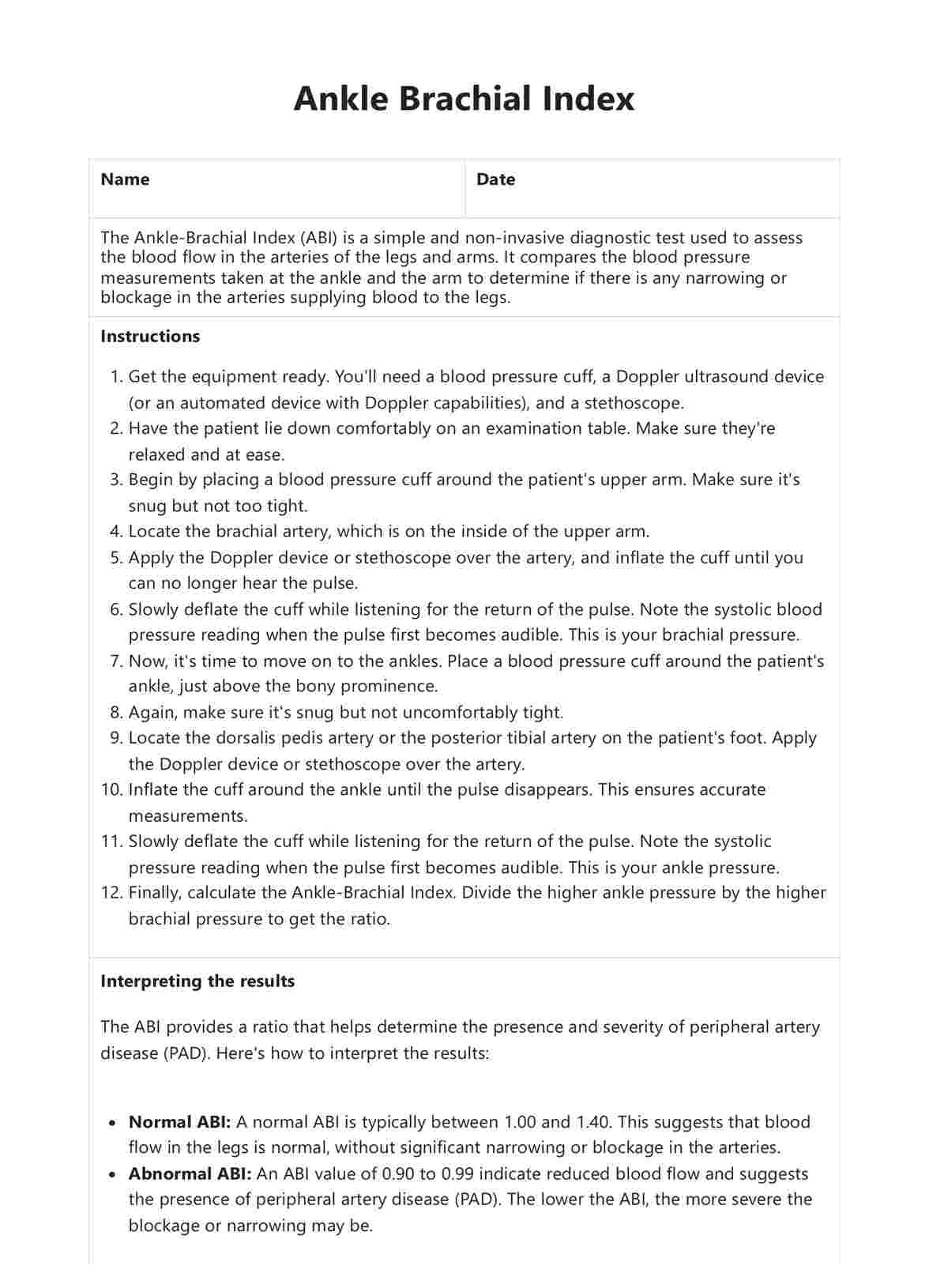The Ankle Brachial Index measures the ratio between the systolic blood pressure at your patient's ankle and your arm. A range of 1.00-1.40 indicates that both pressures are equal, while an abnormal reading of 0.90-0.99 or below 0.90 suggests a decrease in blood circulation or risk of PAD.

Ankle Brachial Index
Discover the Ankle Brachial Index and how to use the test to evaluate blood flow in the legs and arms' arteries. Download our PDF template to learn more.
Ankle Brachial Index Template
Commonly asked questions
The Ankle Brachial Index is a simple test that can be performed in your office or at the patient's bedside. It involves taking systolic blood pressure measurements from both the arms and ankles using a digital sphygmomanometer (blood pressure cuff). Then, divide the systolic pressure measured at the ankle by the systolic pressure measured at the arm. The result is the Ankle Brachial Index.
An Ankle Brachial Index can be used to help screen for PAD. It is most commonly used when patients report leg pain or claudication (pain in the legs that occurs during exercise). Additionally, it helps assess the risk of developing stroke and heart attack.
EHR and practice management software
Get started for free
*No credit card required
Free
$0/usd
Unlimited clients
Telehealth
1GB of storage
Client portal text
Automated billing and online payments











